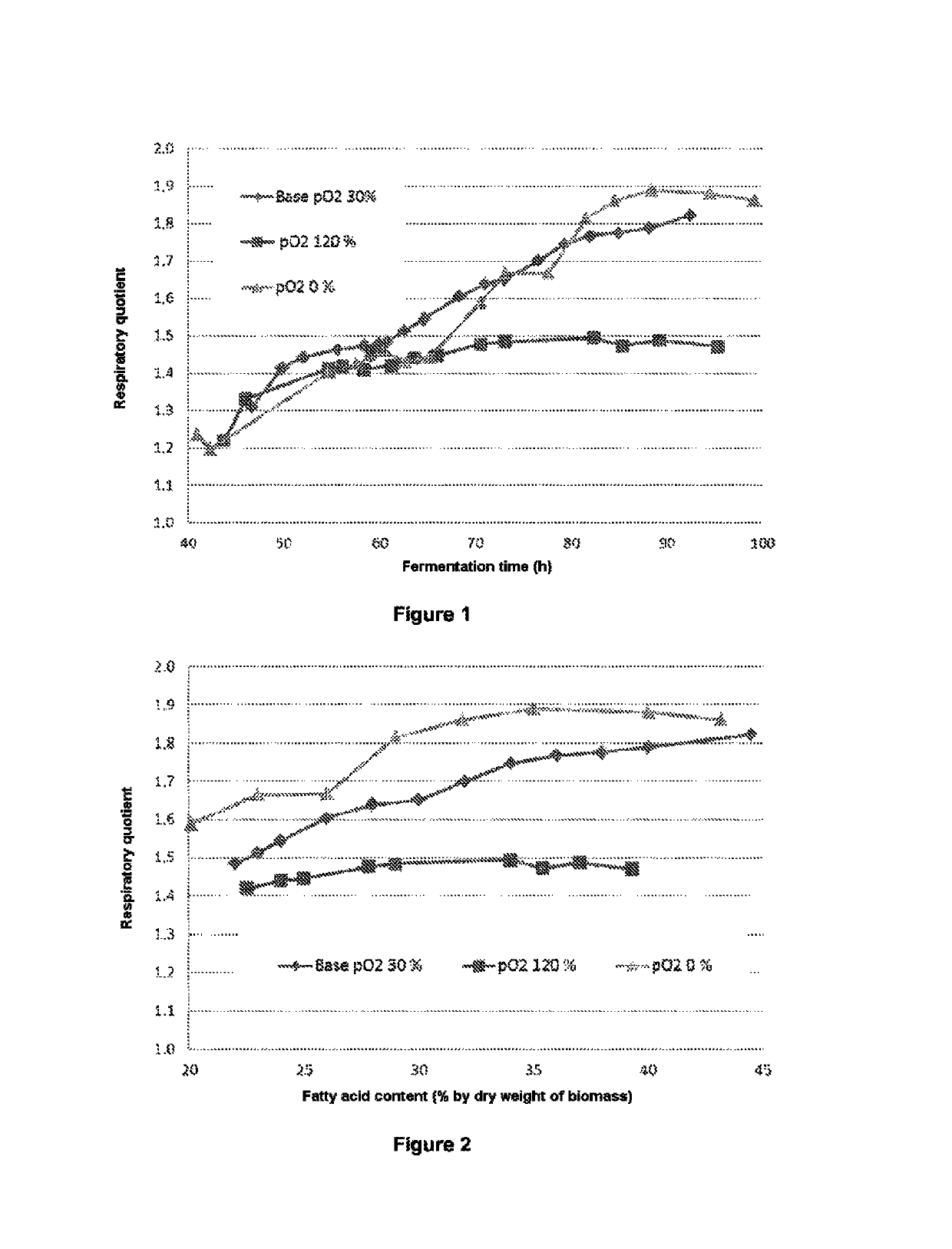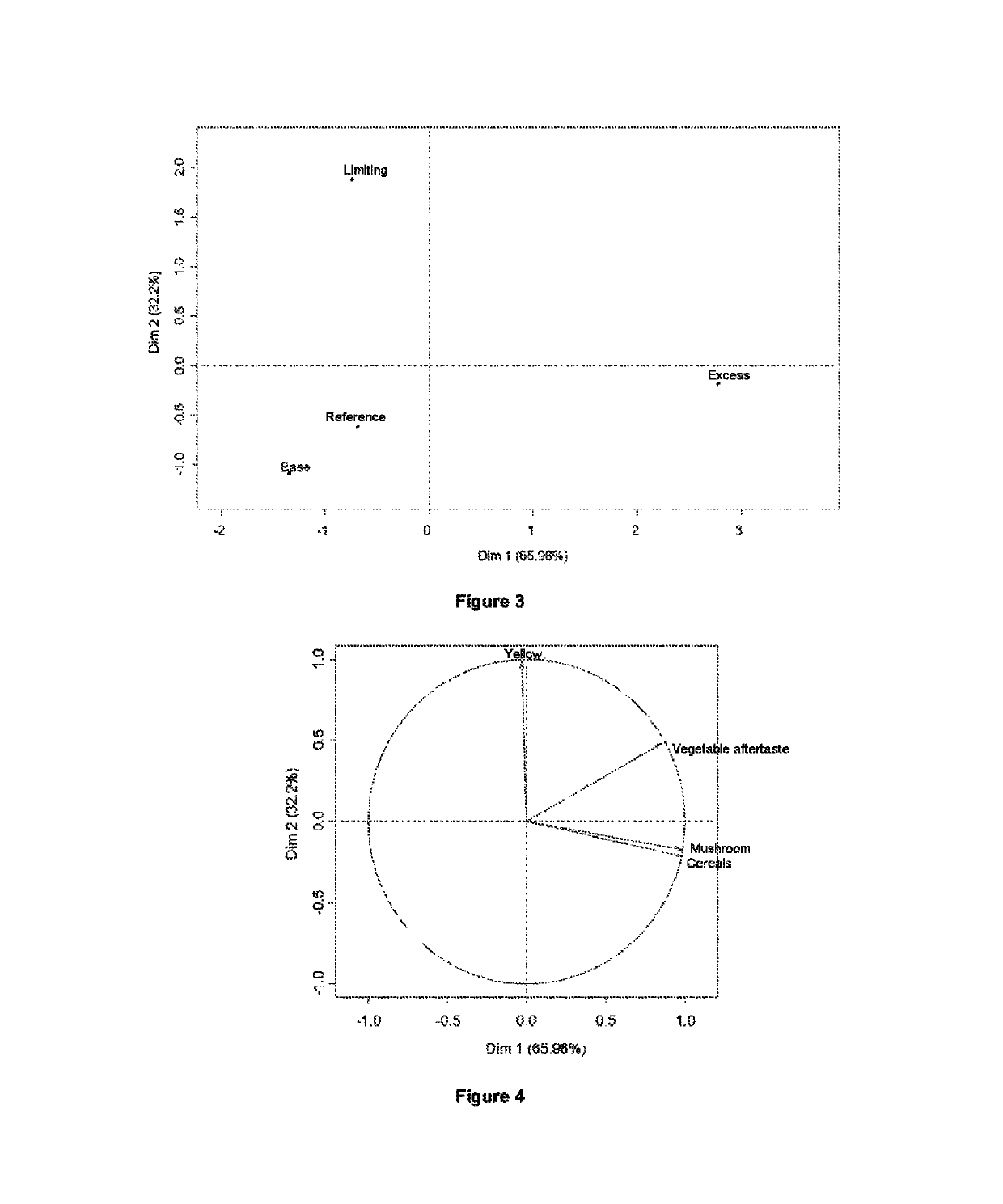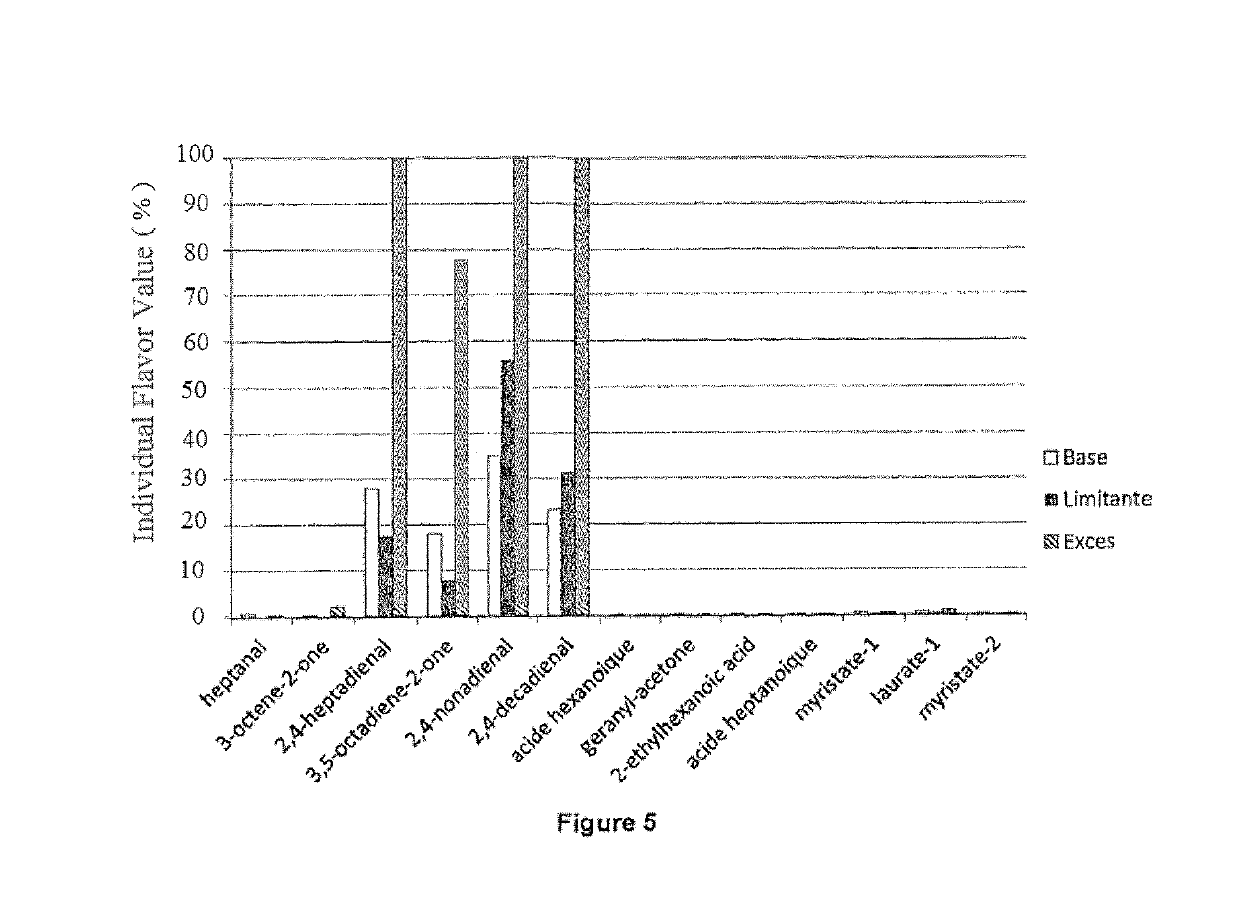Method for the industrial production of flour from lipid-rich microalga biomass with no “off-notes” by controlling the oxygen availability
a technology of microalga biomass and oxygen availability, which is applied in the direction of fermentation, unicellular algae, food science, etc., can solve the problems of major difficulties, not only from the technological viewpoint, but also from the viewpoint of the sensory profile of the composition produced, and the color of the composition is not clear, so as to achieve the effect of preventing as much
- Summary
- Abstract
- Description
- Claims
- Application Information
AI Technical Summary
Benefits of technology
Problems solved by technology
Method used
Image
Examples
example 2
valuation of the 3 Batches Produced in Example 1
[0163]In this example, the applicant company proposes to determine the sensory quality of microalgal flours prepared from the 3 batches produced in example 1, said flours prepared from biomasses that have been ground and dried according to the method described in patent application WO 2010 / 12093.
[0164]The applicant company defined, in French patent application No. 13 56113, a very simple tasting matrix which makes it possible to make an organoleptic evaluation similar to that obtained with much more complex and very different recipes, such as an ice cream or a brioche. The evaluation with this tasting matrix is much more precise or accurate than that carried out with a simple aqueous solution, which has proved to be incapable of predicting the organoleptic qualities of microalgal flour compositions in an ice cream, for example.
[0165]The microalgal flour tasting composition thus comprises:[0166]7% of microalgal flour composition;[0167]1...
example 3
of the Volatile Organic Compounds (VOCs) Associated with Unacceptable Off-Note Organoleptic Classifications in the 3 Batches of Compositions of Flour of Microalgae Obtained from Example 1
[0201]In order to carry out the SPME / GC-MS analysis of the 3 batches of compositions of flour of microalgae obtained from the biomasses produced in example 1, the process is carried out as follows.
[0202]A test specimen of 3 g of sample is introduced into a sealed SPME flask (20 ml) and incubated at 60° C. for 15 min and then extracted at 60° C. for 45 min with a DVB / CAR / PDMS (abbreviation for divinylbenzene / -carboxen / polydimethylsiloxane, df 50 / 30 μm) SPME fiber.
[0203]The volatile organic compounds extracted are desorbed in the injector of the TSQ GC-MS system from Thermo Scientific, and then separated on a CPwax52 (60 m×0.25 mm, 0.25 μm) column with helium gas at 1.5 ml / min.
[0204]The temperature program is: 50° C. isotherm for 3 min, then programming at 5° C. / minute up to 230° C., then isotherm for...
PUM
| Property | Measurement | Unit |
|---|---|---|
| volume | aaaaa | aaaaa |
| concentration | aaaaa | aaaaa |
| concentration | aaaaa | aaaaa |
Abstract
Description
Claims
Application Information
 Login to View More
Login to View More - R&D
- Intellectual Property
- Life Sciences
- Materials
- Tech Scout
- Unparalleled Data Quality
- Higher Quality Content
- 60% Fewer Hallucinations
Browse by: Latest US Patents, China's latest patents, Technical Efficacy Thesaurus, Application Domain, Technology Topic, Popular Technical Reports.
© 2025 PatSnap. All rights reserved.Legal|Privacy policy|Modern Slavery Act Transparency Statement|Sitemap|About US| Contact US: help@patsnap.com



